Tourism and religion meet in Vietnam, in the city of Tay Ninh, 96 km northwest of Ho Chi Minh City, formerly Saigon.
What is Caodaism?
Tay Ninh is the seat of Caodaism, a new religion invented by a Cochin-Chinese official in the 1920s. It is a synthesis between the great religious philosophies of the West and the Far East. It is symbolized by a cathedral-temple located 4 km east of the city. and looks like a mixture of church and pagoda.
Caodaism encourages obedience to the 3 duties (between king and citizen, father and child, husband and wife) and the 5 virtues (humanity, obligation, civility, knowledge, reliability) of Confucianism. Followers should attend religious services regularly, practice vegetarianism at least 10 days a month, purify their body and mind, and avoid killing living beings.
Strongly inspired by Christianity, Caodaism is based on 3 religions found in Southeast Asia:
– Confucianism which deals with moral behavior in life in society
– Taoism, on the search for life in fullness and serenity through detachment and a certain interior and exterior behavior
– Buddhism which gives an answer to the question of the existence and the future of man.
In addition, Christianity is present in the “Great Temple” of Tây Ninh with the statue of Jesus. We can also notice that the structure of the clergy is copied on the model of Roman Catholicism with 9 levels of hierarchy including a pope, cardinals and archbishops. Worship involves group prayer in the temple, elaborate rituals and festivals.
The revered figures of Caodaism
All cultures are present in the concept of spiritual guide of Caodaism. We find there Moses, Jesus, Mohamet, Shakespeare, Pasteur, Sun Yat-Sen or Lenin. Great French figures like Joan of Arc and Victor Hugo are particularly revered in religion. The first for guiding the reception of faith and promoting gender equality through seances. The second is the European character who holds the greatest role in Caodaism, who has drawn many lessons from it as well as the text of several important prayers. He practiced spiritualism in Jersey from 1852 to 1855, predicting that he would become the prophet of a new religion made, according to Patrick Boivin, of “Christianity expanded by metempsychosis, which Hoskins translates into a religious current where European and Asian mysticisms would merge.
Founded in 1921 and instituted in 1925 in Cochin China (South Vietnam), this religion is millenarian and syncretic. Its doctrine or its practices are a mixture of elements taken from different beliefs. The failure of colonial reformism driven by Governor General Alexandre Varenne, and the radicalization of Vietnamese nationalist movements are the basis of the birth of the religion, whose history and philosophy were written by the Frenchman Gabriel Gobron, says ” Brother Gago”.
The temple
First settled in Tây Ninh, the religion split into several branches according to the desire of the Tây Ninh branch to get involved in the country’s politics by creating an army and a political party.
Regarding its architecture, the temple is supported by 18 dragon pillars inspired by the colonial period. Walking around, you can admire its architecture.
Built between 1933 and 1955, the Great Temple of Cao Dai resembles a Christian cathedral in its architecture. It has 2 square towers, a long central nave with an upper gallery and side naves. The altar is at the opposite end of the entrance, as in a typical church.
The entrance porch of the Cao Dai temple faces west, towards Jerusalem, as in Christian churches. A large fresco painted on the wall represents Victor Hugo dressed as an academician, who writes with a quill the motto “God and Humanity” and “Love and Justice”; accompanied by the Chinese revolutionary and statesman Sun Yat-Sen, who holds the inkwell. Alongside them stands the Vietnamese poet Nguyen Binh Khiem, a third “saint” of Cao Dai.
Inside, the stained glass windows all bear the Cao Dai symbol, a triangle enclosing the divine eye. Under the dome of the altar, an enormous blue sphere bearing the divine eye symbolizes the ideal of universal religion. There are also 8 sculpted figures above the dome: Buddha, Confucius, Lao-Tseu, Khuong Tu Nha, the goddess Quam Am and the genius Quan Cong, Jesus Christ, Ly Thai Bach. Backed by Pham Cong Tac, a disciple of the founder Ngo Van Chieu who later became the second pope of Caodaism. He also contributed to the militarization of the sect and to the alliance with the Japanese during the Second World War. We also notice dragons wrapped around the columns which support the nave which extends over 9 sections, number of the stages to reach the paradise.
Rites and celebrations
Followed by 50,000 followers in central Vietnam, Cao Dai Temple offers 35-minute prayers, at fixed times, 4 times a day, at 5:30 a.m., 11:30 a.m., 5:30 p.m. and 11:30 p.m. A real spectacle, it allows hundreds of visitors to watch it from the balconies inside the temple or near the entrance doors. The ritual has not changed since the origins. The door on the left, leading to the complex is for women, the one on the right for men. Before entering, you must remove shoes and hats, the doors of the sanctuary are separated from the door for the followers even if the priests of the 2 sexes use the central door. Musicians installed in the gallery above the entrance porch accompany the prayers of the faithful.
Behind the altar is a huge globe with the Cao Dai “divine eye”, a symbol of Caodaism. in front of which is suspended from the ceiling, a sign “van Giao Nhat Ly” (All religions have the same reason). An image of the founders of the 5 largest religions in the world is behind the golden letters. From left to right are Muhammad, Lao Tzu, Jesus, Buddha and Confucius.
The dignitaries in red next to women dressed in white, are in the middle of the temple, facing the high altar surmounted by the large globe. Other dignitaries in red, blue white follow and finally the mass of the faithful. Disciples wearing armbands marked with the letters BT provide security. Visitors, wearing proper attire, can attend Caodaist masses (without any speeches, sermons or theological commentary) from the balcony overlooking the main nave.
Offerings
Accepted offerings are flowers, fruits, tea, alcohol, water and incense. On the other hand, sticky rice or votive papers are never found. The prayers are close to Buddhism, they are invocations that begin with “Nam Mô …” and pay homage to Cao Dai, Ly Thai Bach (the first prophet), to the representatives of the 3 Eastern religions (Buddhism, Confucianism and Taoism) as well as to spirits, saints and geniuses. We can leave the ceremony whenever we want.
Temple religious calendar
Caodaism has 2 major religious holidays: the Feast of God the Father (Cao Dai) on January 9, and of the Mother (the Buddhist “Lady”) on August 15. Christmas, Easter and Buddha’s birthday are also celebrated with great fanfare.
Copyright ©2023 IMPACT EUROPEAN
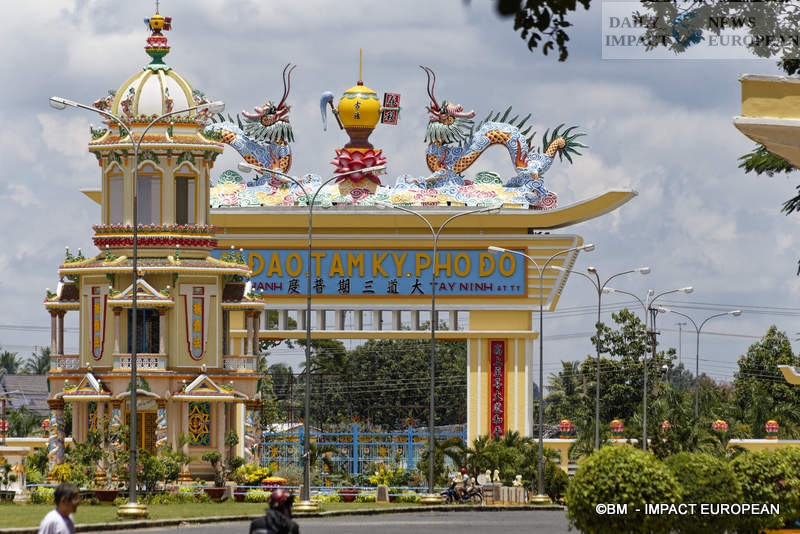
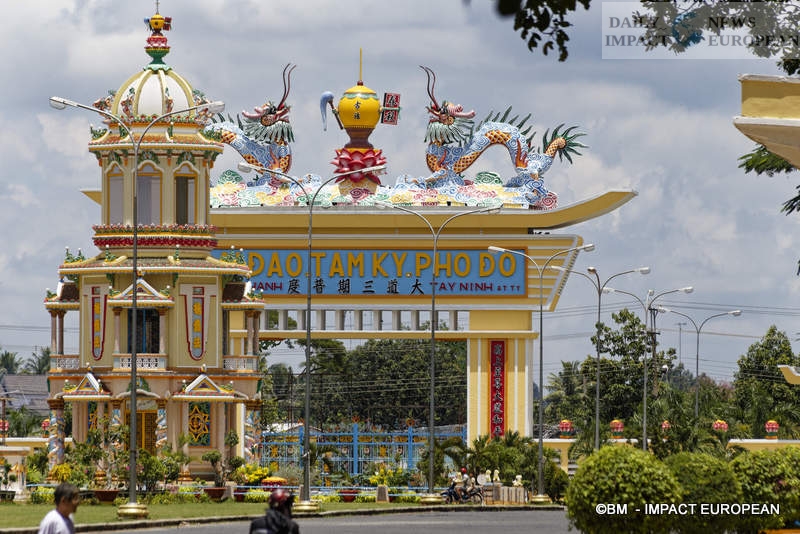
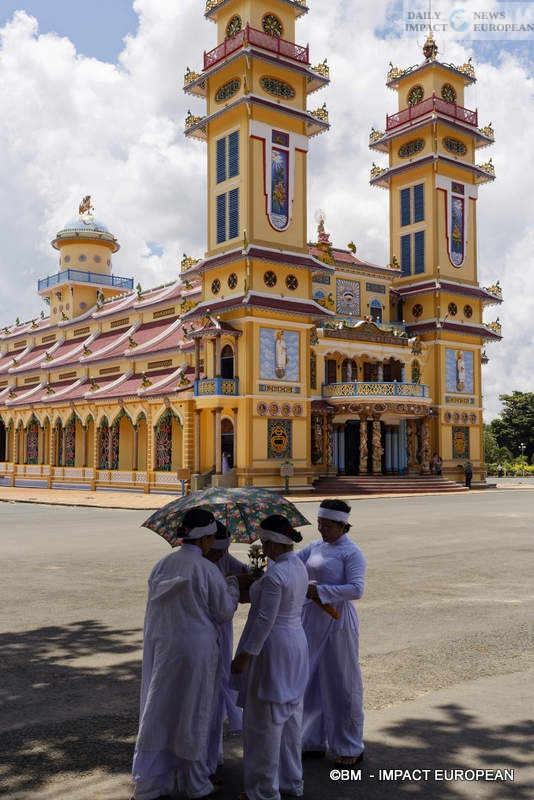
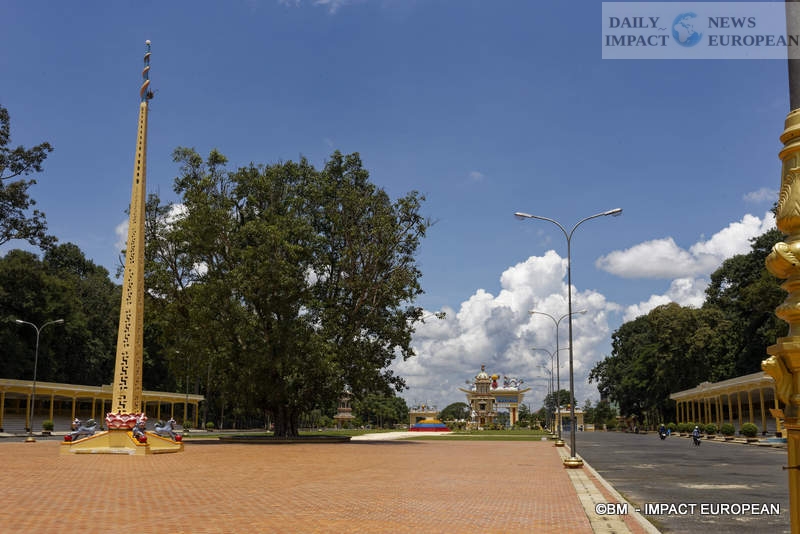
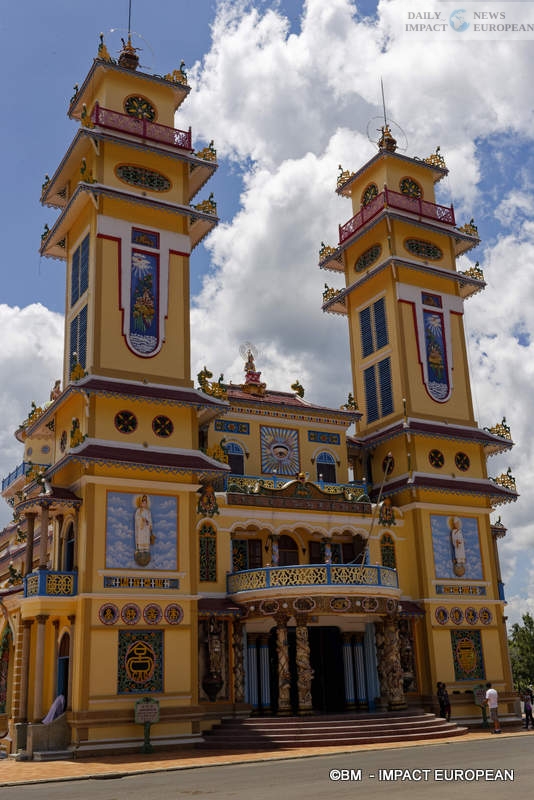
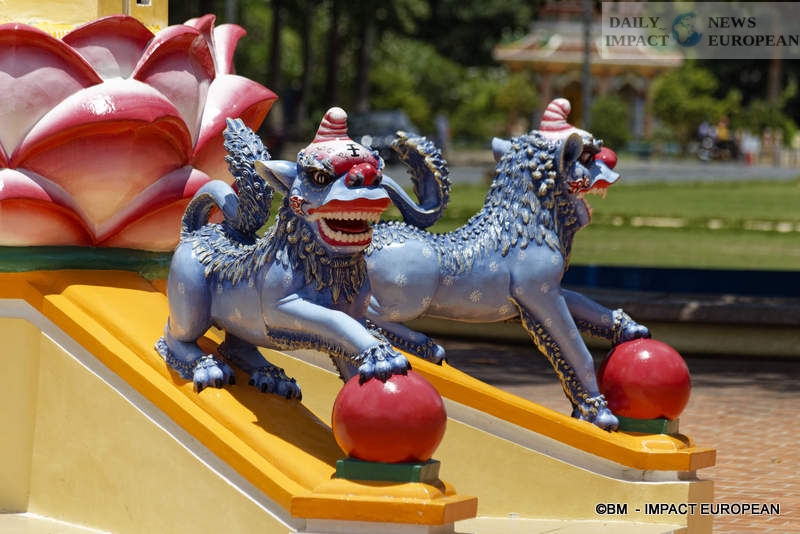
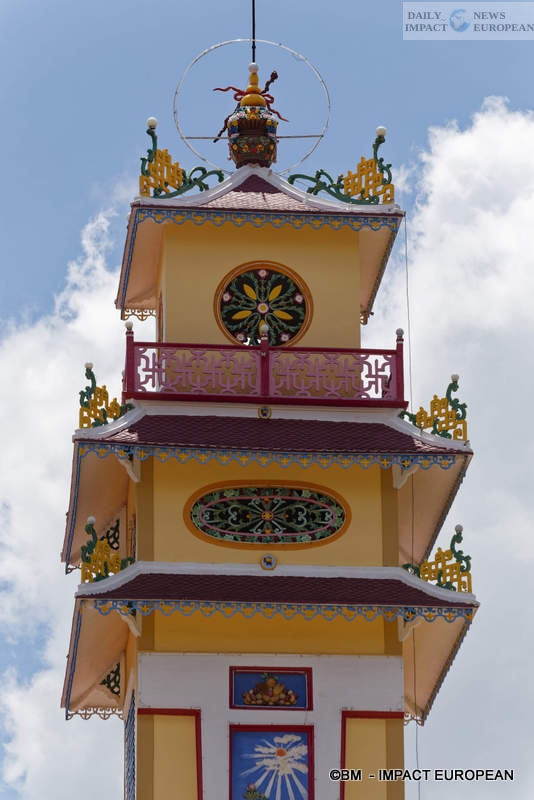
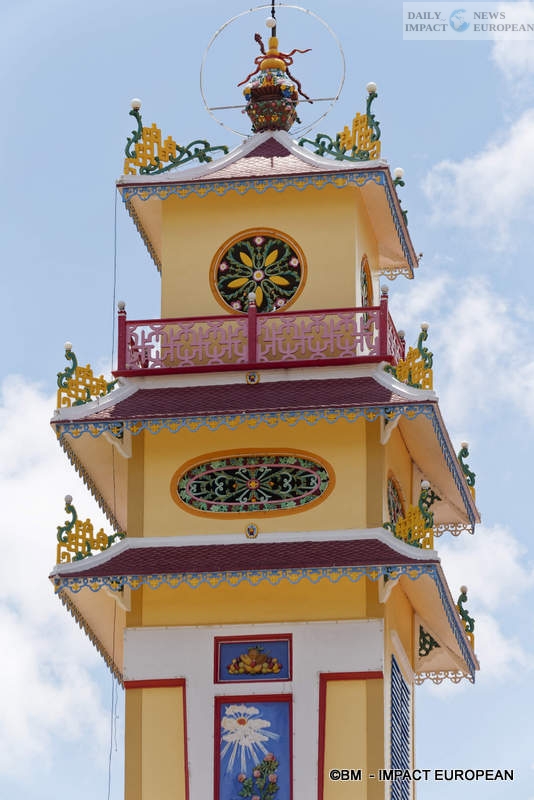
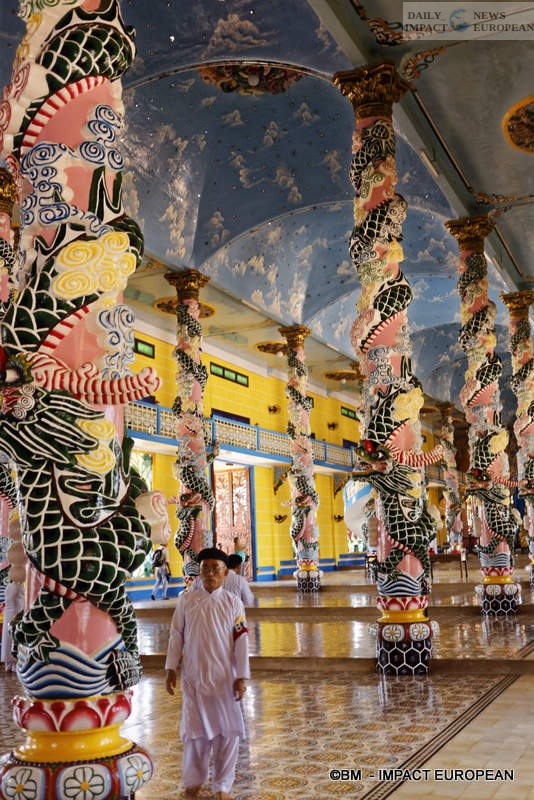
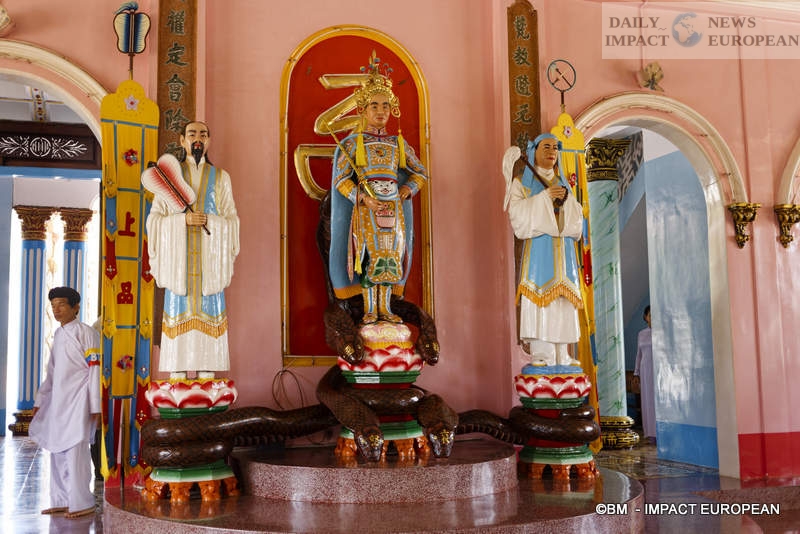
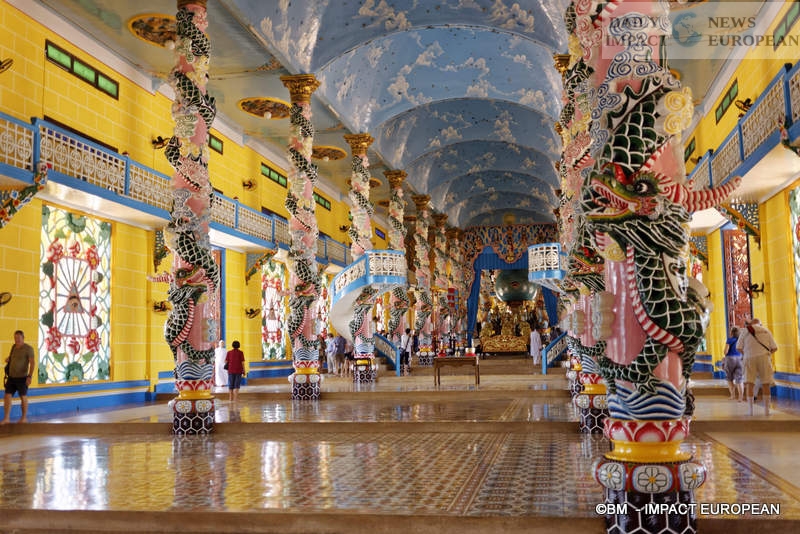
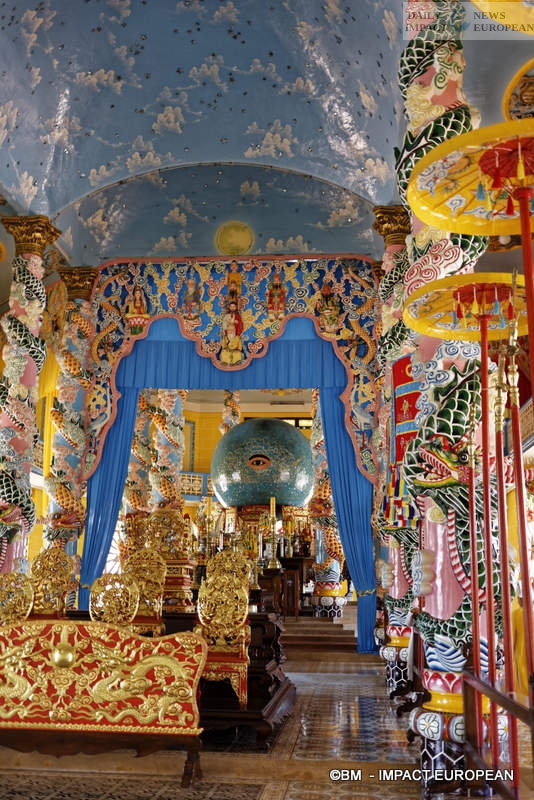

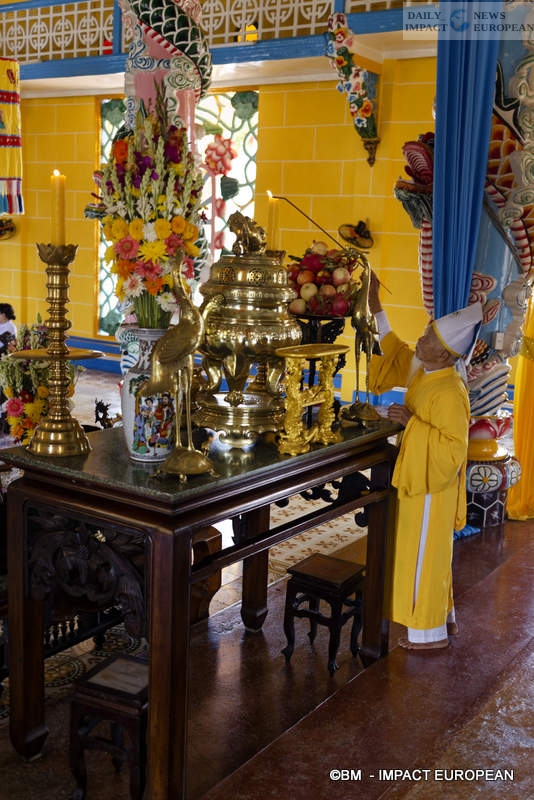
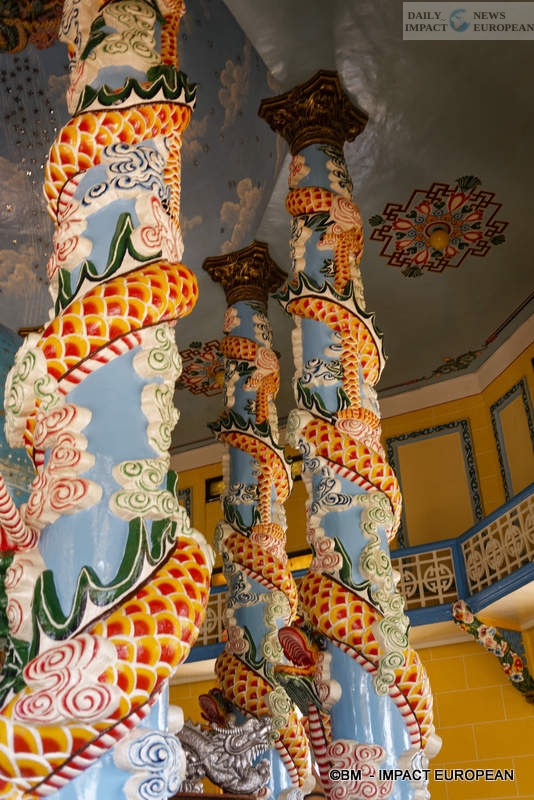
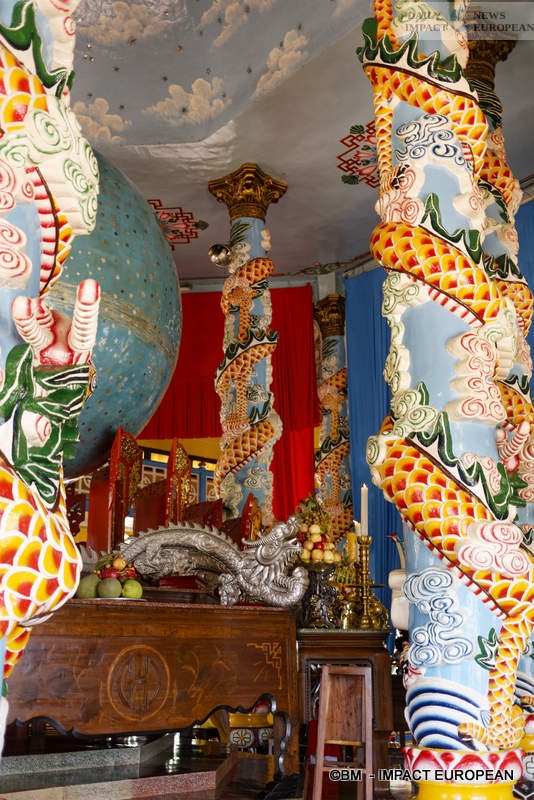
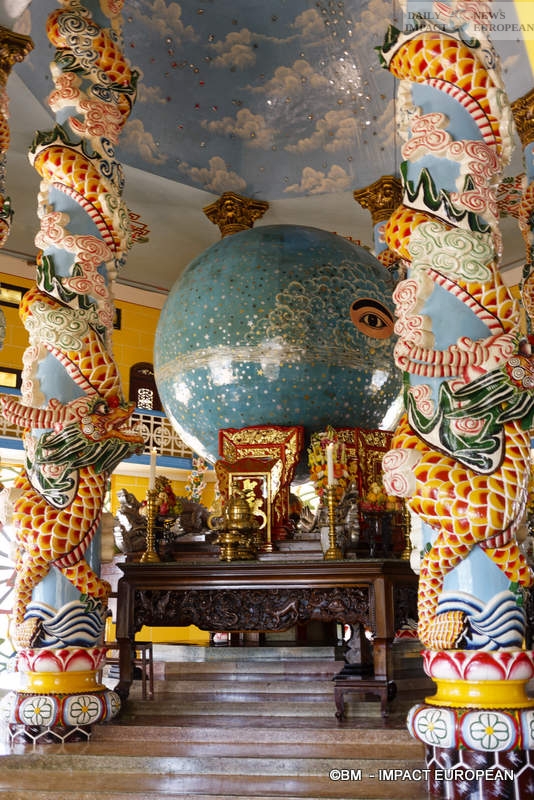
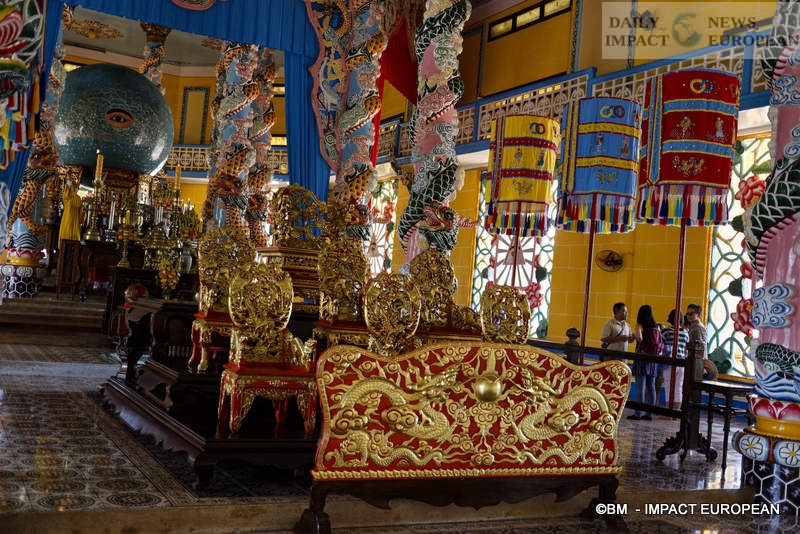
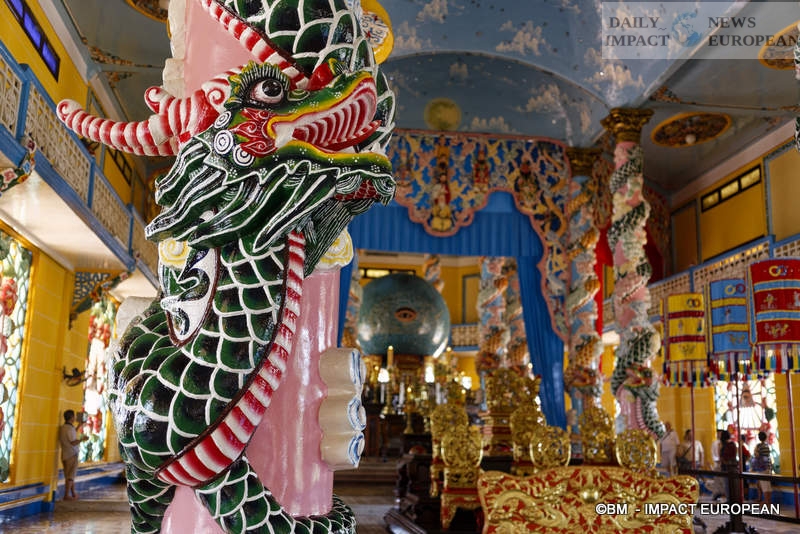
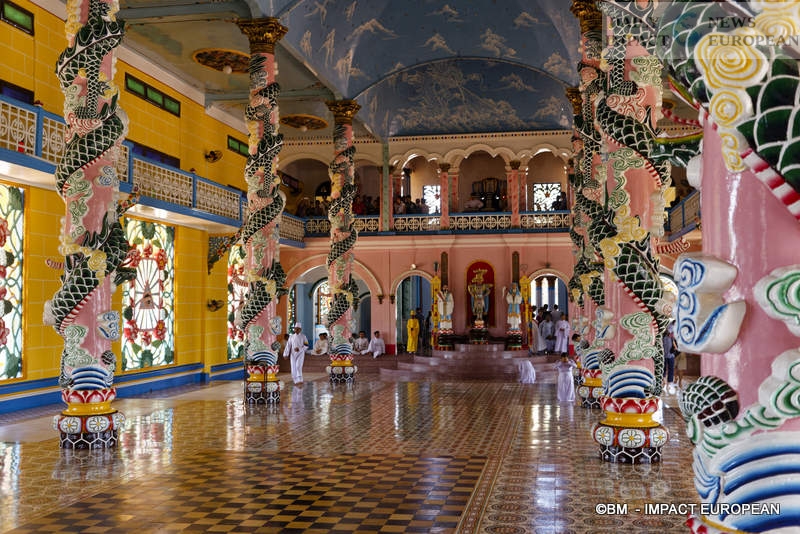

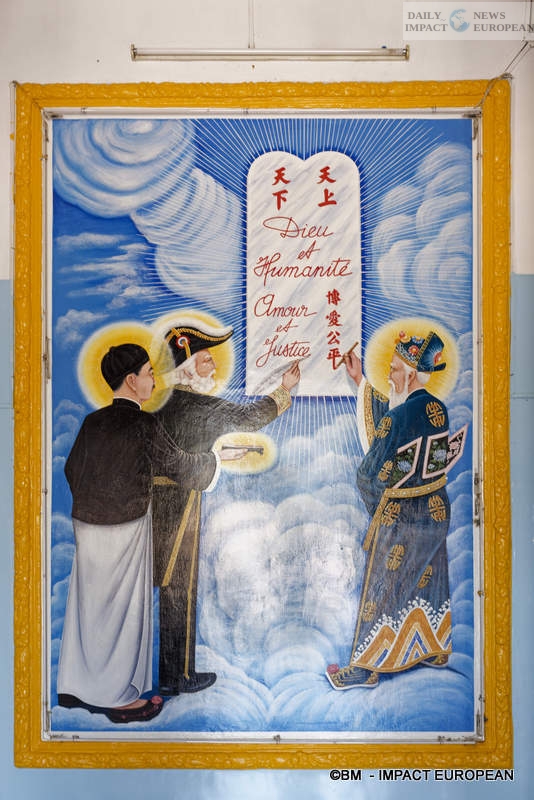
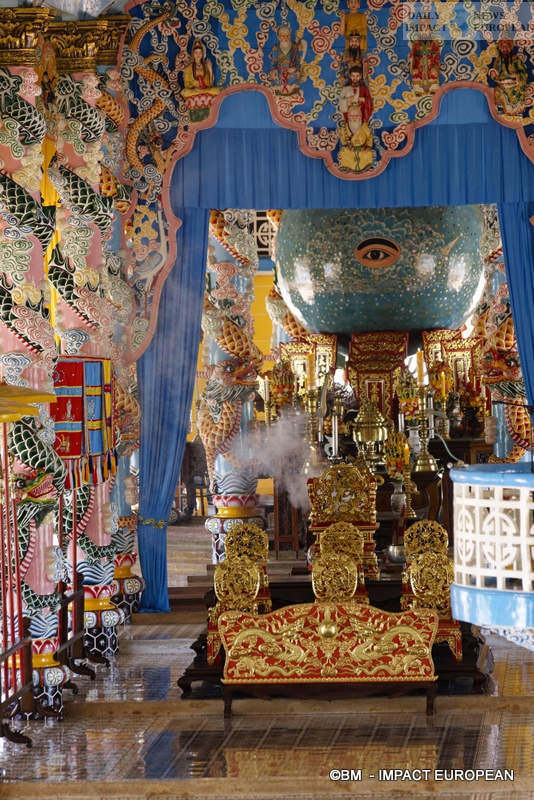
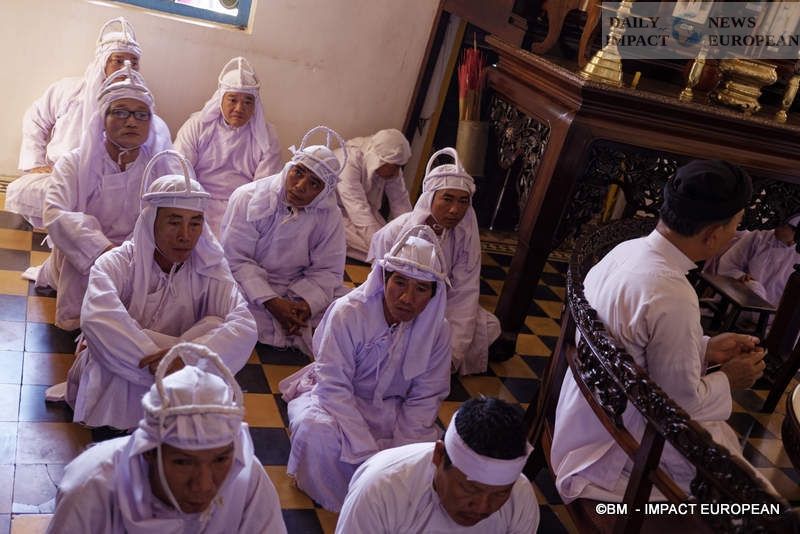
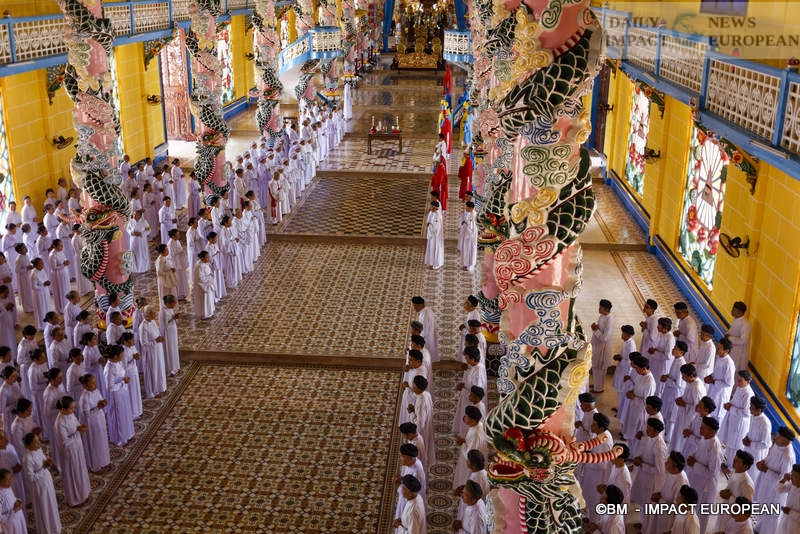
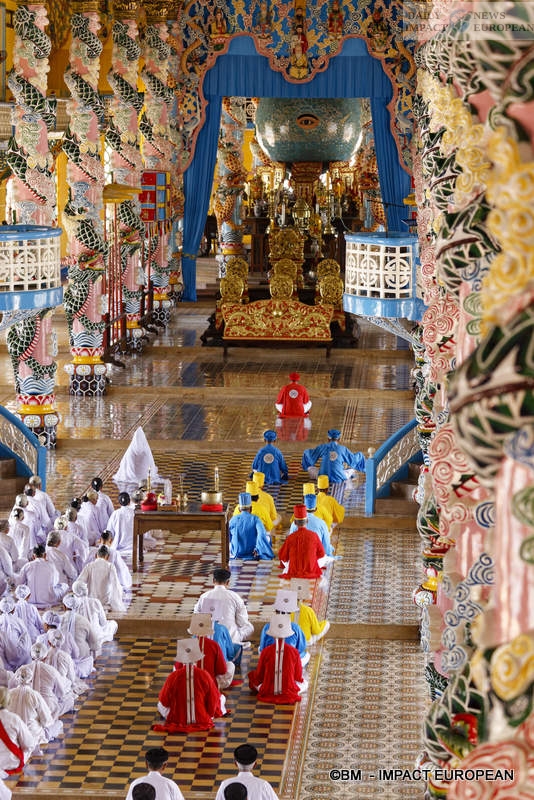
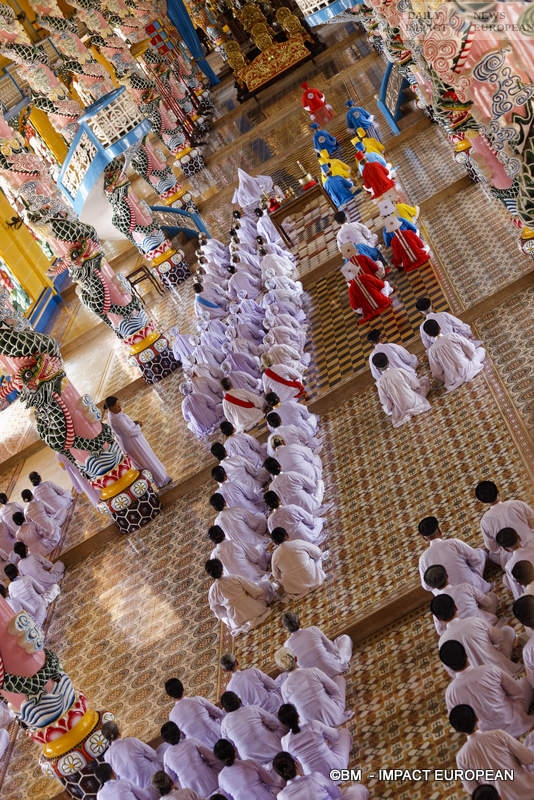
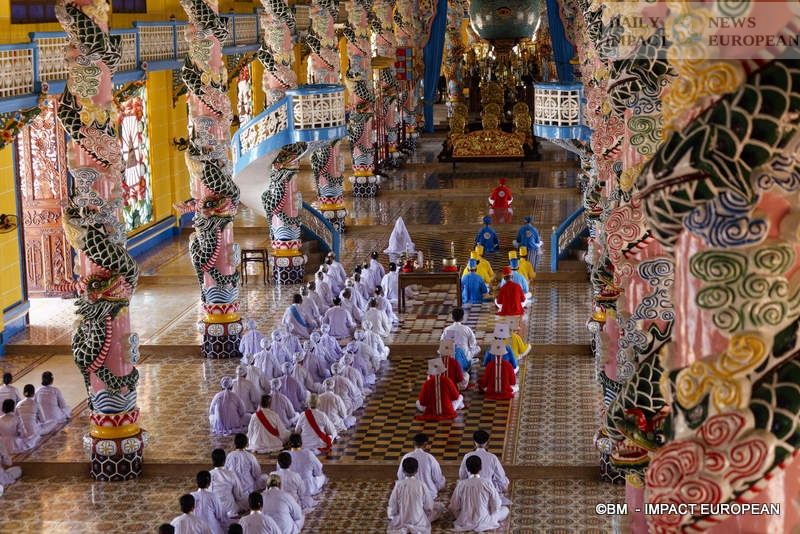
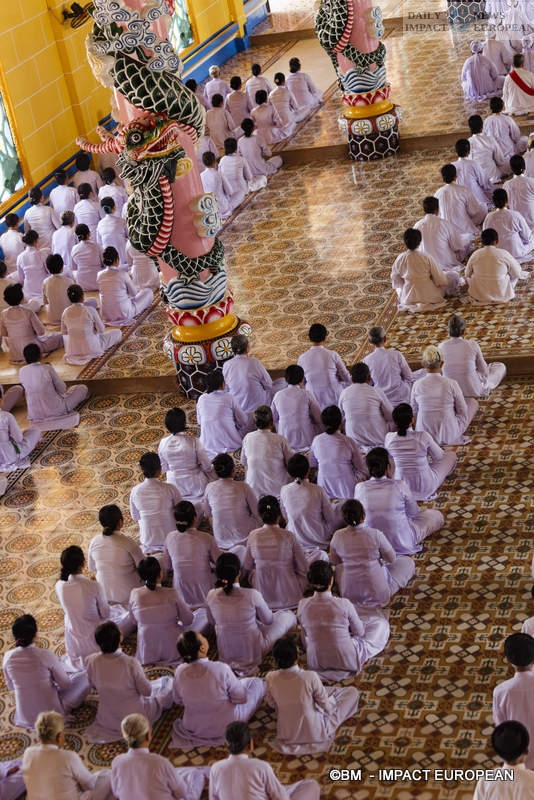
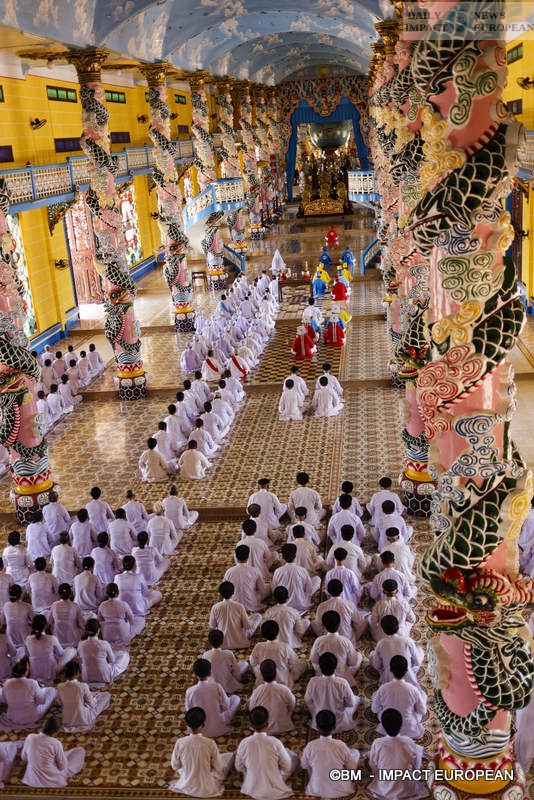
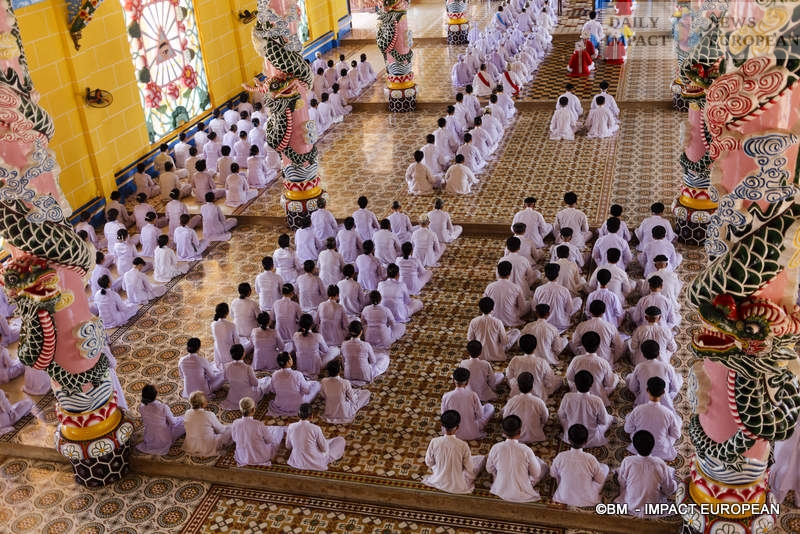
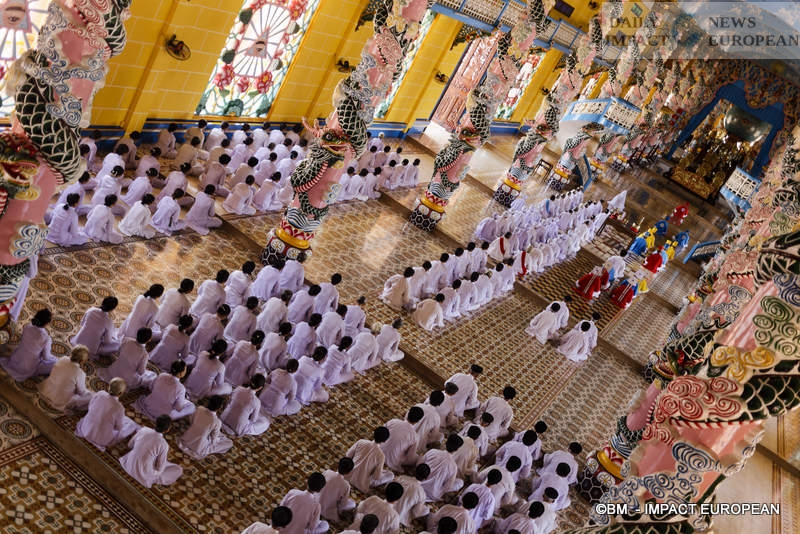
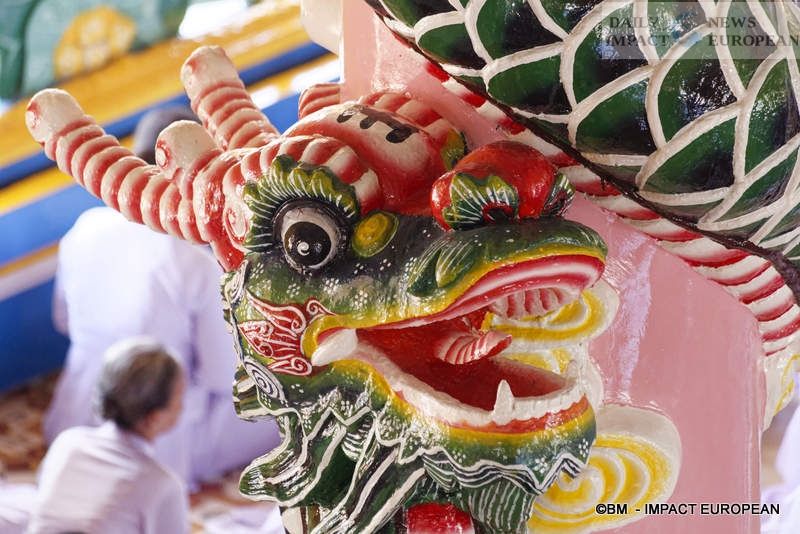
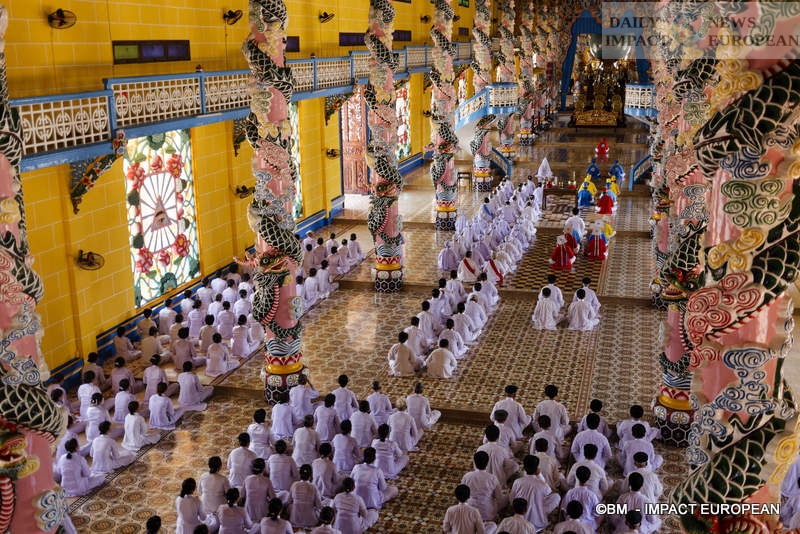
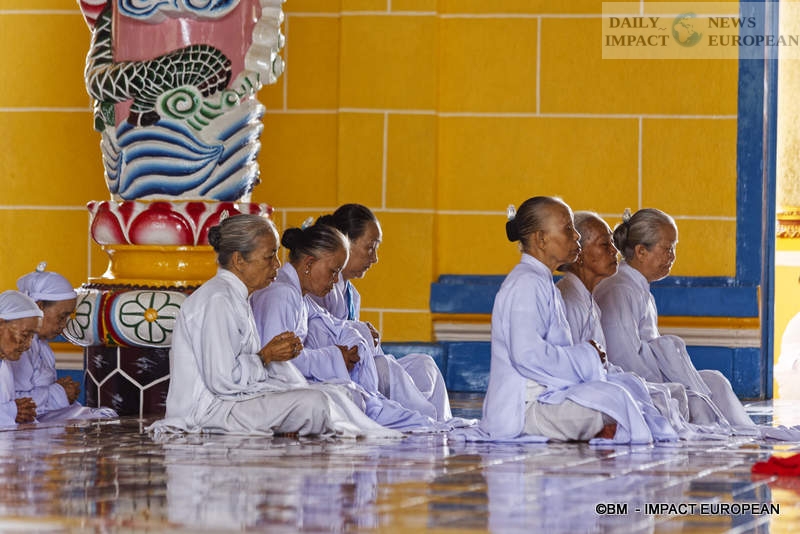

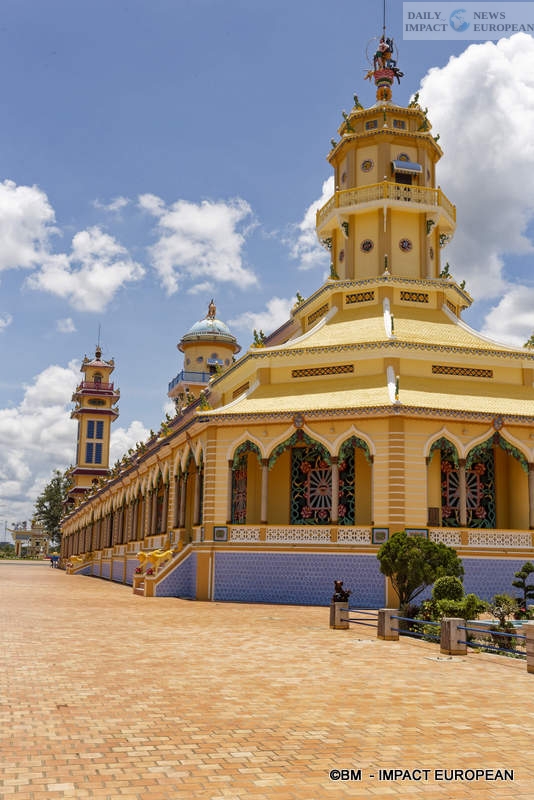
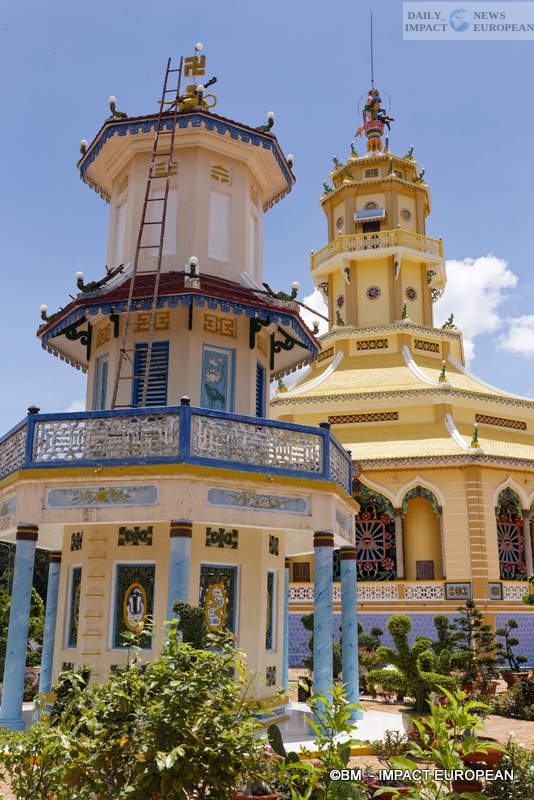
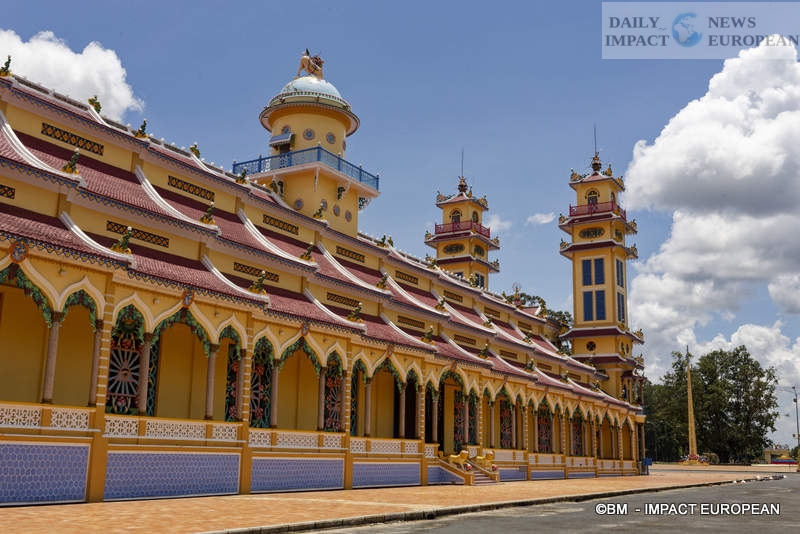
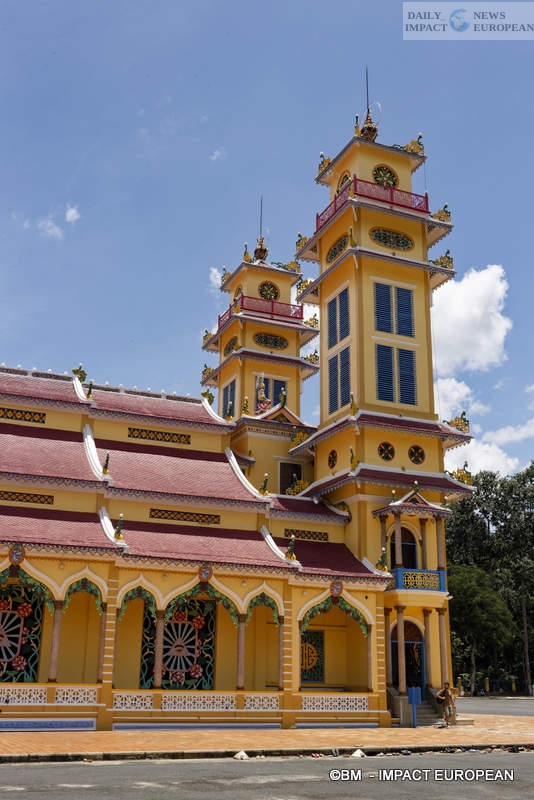
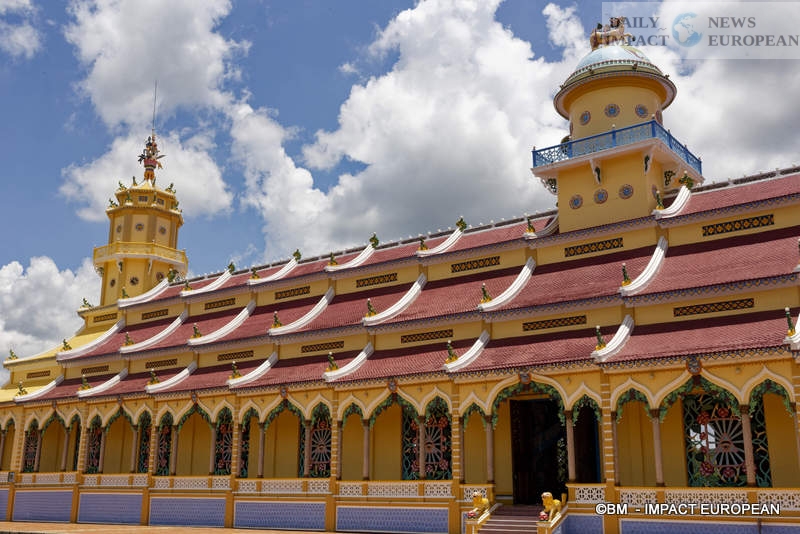
More Stories
Meeting between French and Israeli counterparts Emmanuel Macron and Isaac Herzog at the Élysée
“Dansong” at the Avignon Off Festival 2024
Olympic Flame at the Jardin du Musée Mac Val